Galapagos Marine Wildlife
Are you curious about the stunning marine life in the Galapagos Islands but don’t know where to start? The Galapagos is a top spot for snorkeling and exploring underwater, attracting visitors from all over.
This article will guide you through the best sites and most amazing creatures you can find there. Join us for an aquatic adventure!
Snorkeling Sites in the Galapagos Islands
The Galapagos Islands offer many snorkeling spots. You can find sites perfect for all skill levels.
Range of Skill Levels
The snorkeling sites in the Galapagos Islands cater to all skill levels. Beginners can enjoy calm waters close to beaches. Experienced snorkelers will find challenging spots with strong currents.
Some areas, like Devil’s Crown, offer advanced experiences. Here, you can see deeper coral formations and diverse marine life. This range of difficulty ensures that everyone has a chance to explore these amazing waters.
Notable Sites, such as Devil's Crown
Devil’s Crown is a must-visit snorkeling site in the Galapagos Islands. It offers thrilling underwater encounters and diverse aquatic species.
- Devil’s Crown
- Located near Floreana Island.
- Known for strong currents, ideal for experienced snorkelers.
- Features pristine coral reefs and unique geological formations.
- Home to exotic fish, sea turtles, and vibrant marine life.
- Gardner Bay
- Found on Española Island.
- Calm waters suit all skill levels.
- Frequent sightings of sea lions and colorful fish.
- Kicker Rock
- Near San Cristobal Island.
- Famous for visibility of sharks and rays.
- Stunning rock formations attract many snorkelers.
- Punta Espinoza
- Located on Fernandina Island.
- Rich in Galapagos marine life like sea turtles and flightless cormorants.
- Offers crystal-clear waters for easy viewing.
- Tagus Cove
- Lies on Isabela Island’s west coast.
- Great spot for seeing penguins and marine iguanas.
- Sheltered bay with calm waters perfect for beginners.
- Bartolome Island
- Renowned for its scenic beauty above water too.
- Schools of colorful fish around Pinnacle Rock area
Common Fish Species
In the waters of the Galapagos, you can find many colorful fish. Some are bright and easy to spot while snorkeling or diving.
Yellow-tailed Surgeon Fish
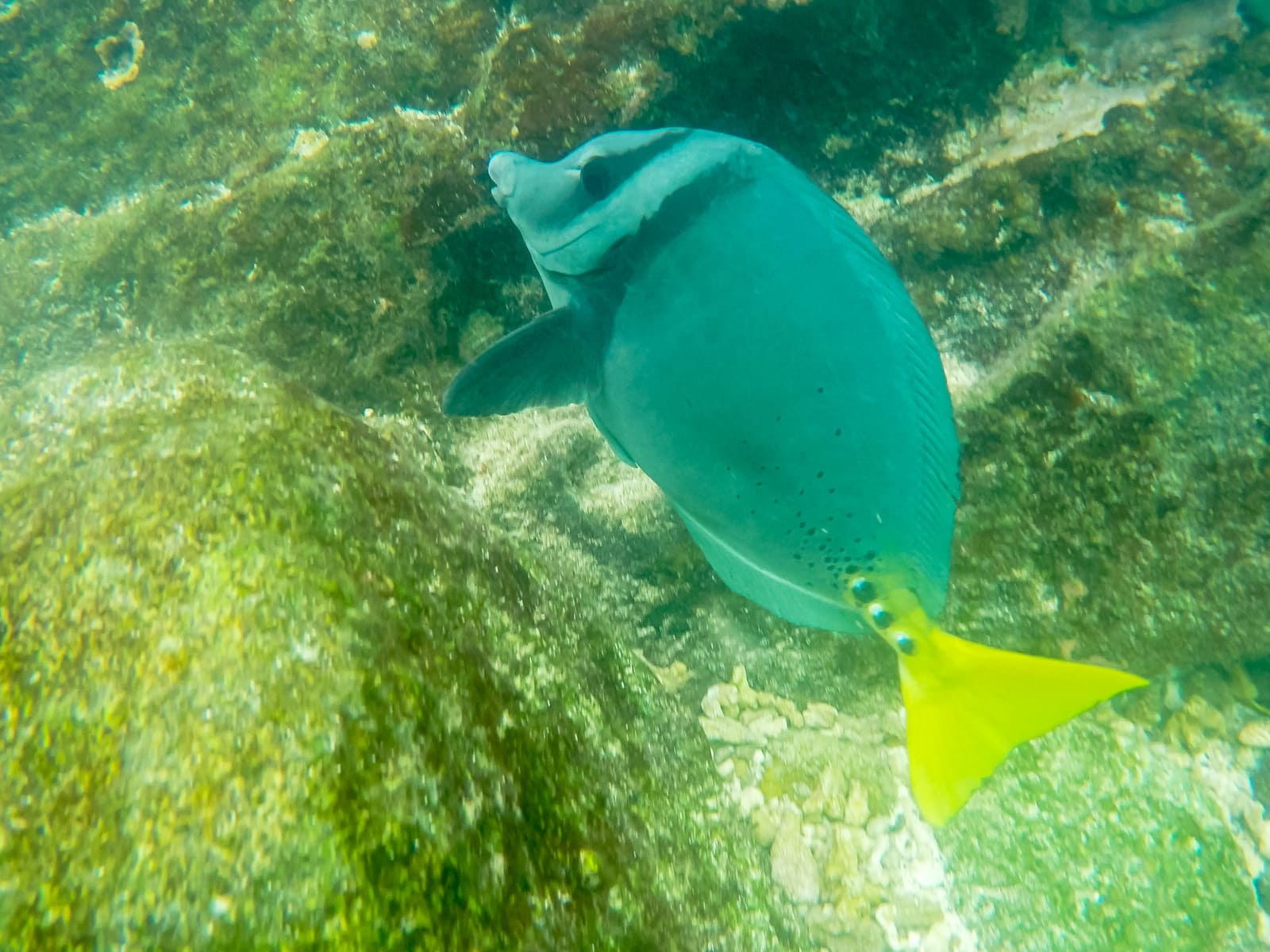
Yellow-tailed Surgeon Fish have rounded, silver bodies with yellow tails. They swim in large schools and are easy to spot. These fish show three dark dots near their tails and two vertical stripes on the sides, making them unique.
Their sharp spines protect them from predators. You will see these tropical fish often while snorkeling around the Galapagos Islands. They play a crucial role in the reef ecosystem by eating algae off rocks.

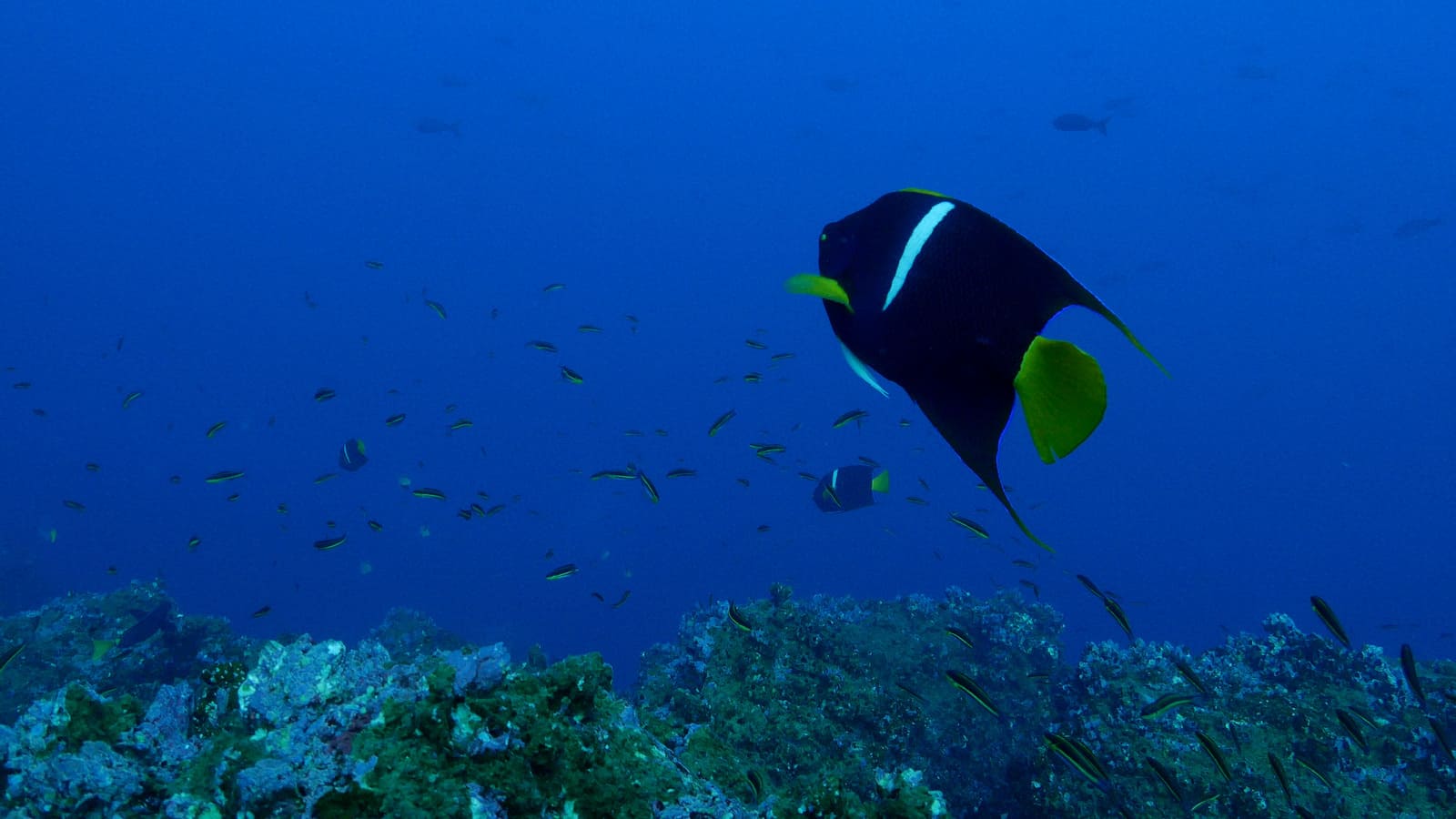
King Angelfish

The King Angelfish is a medium-sized, dazzling blue fish. It has striking orange or red fins and tail. A long white vertical stripe runs along its side. These colorful marine species are often found at most snorkeling sites in the Galapagos Islands.
“King Angelfish add a splash of color to the underwater world.”
This shy fish may swim away from snorkelers. Yet, their vivid colors make them hard to miss in the coral reef habitats. Snorkelers can spot this beautiful creature while exploring the ocean habitat filled with tropical fish and other marine life.
Sergeant-Major
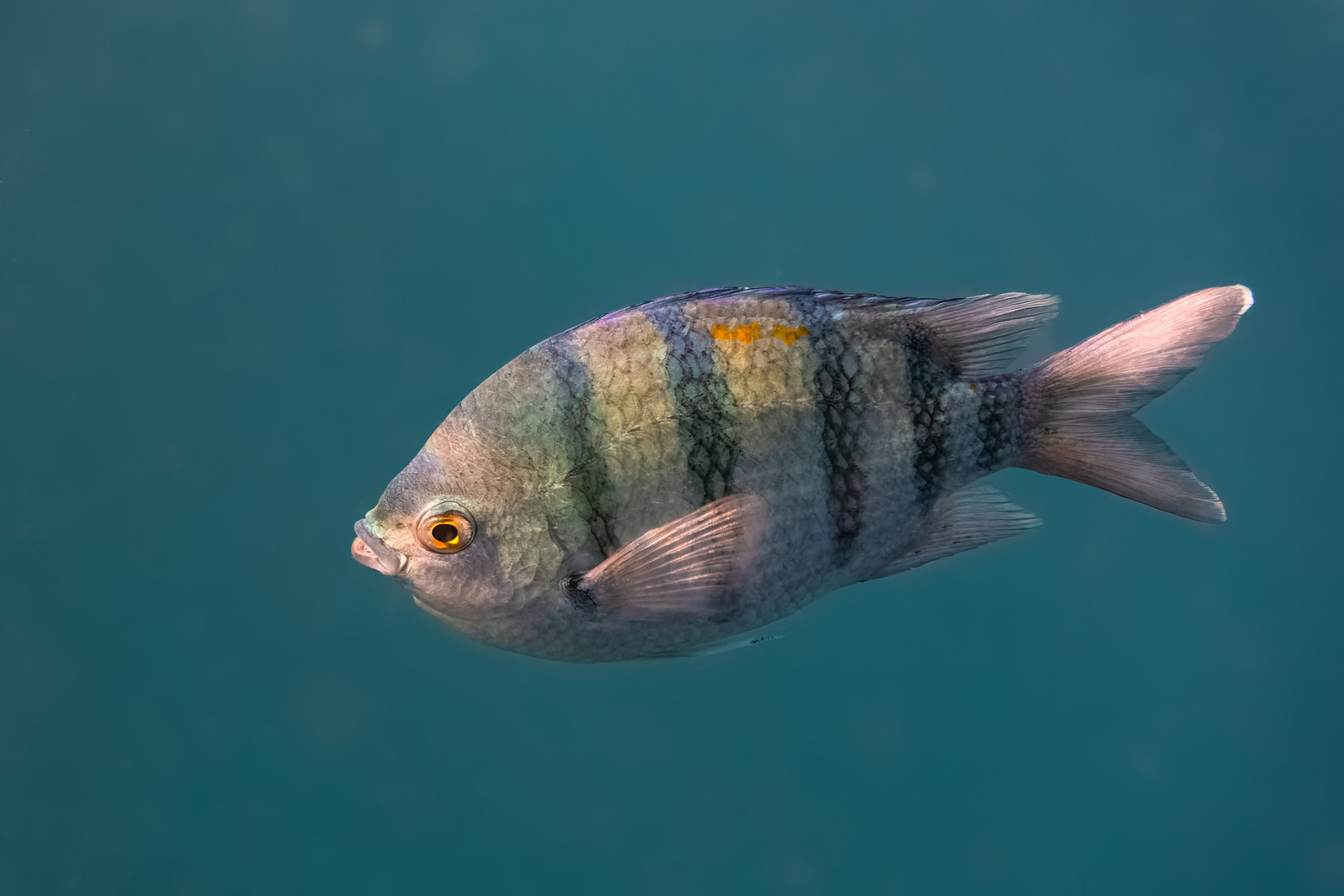
Sergeant-Major fish have black stripes on deep blue bodies. These small, round fish are very common in the Galapagos Islands. You will likely see them at almost every snorkeling site.
They sometimes swim alone but can also form schools. This makes spotting them both easy and exciting for snorkelers of all levels. Get ready to see these colorful Fish during your underwater adventures!

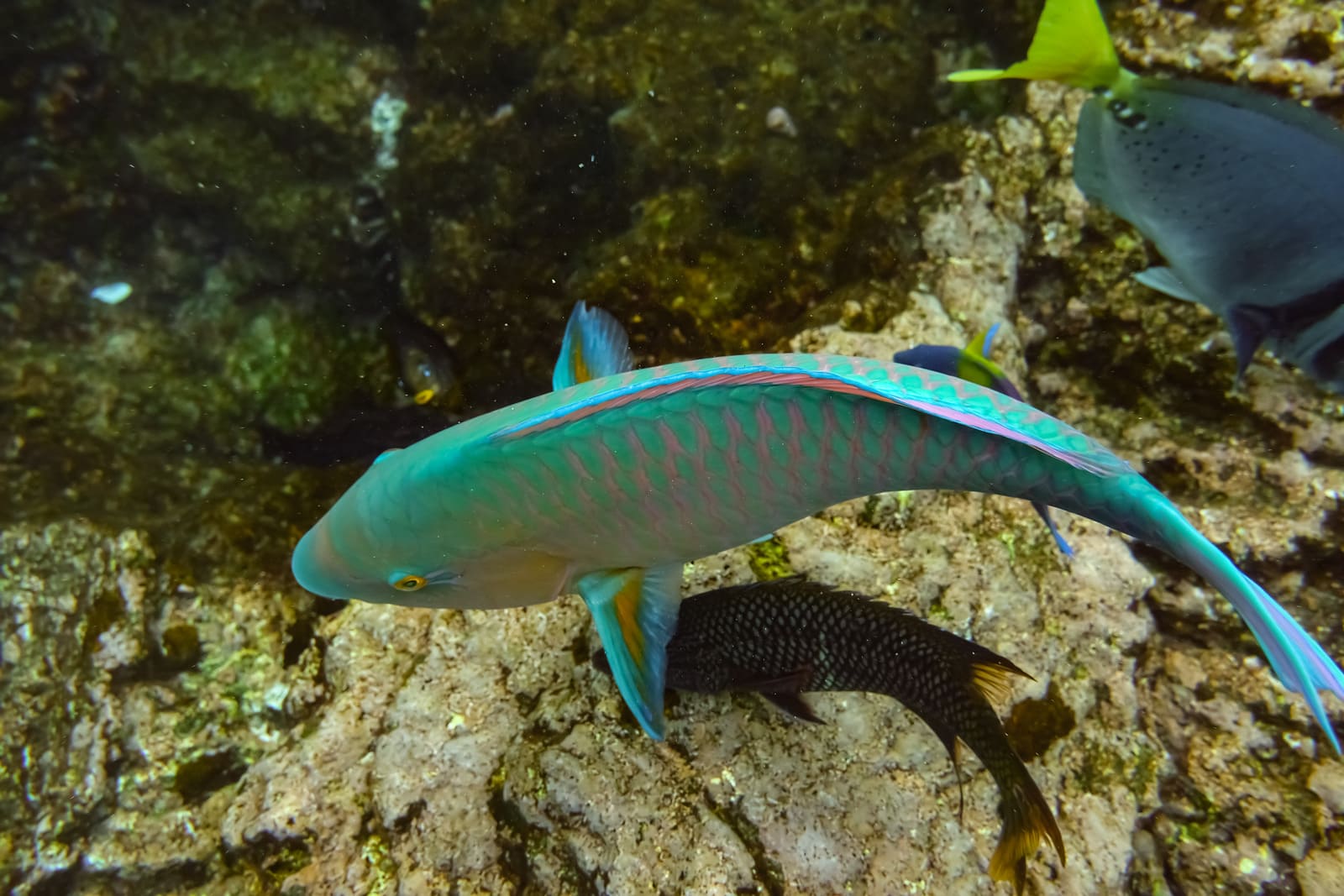
Parrot Fish

Parrot Fish are long, colorful fish. They use a beak-like mouth to feed on coral organisms. These fish come in bright blue, green, and orange colors. Parrot Fish prefer shallow waters with lots of coral reefs.
They usually stay shy unless you approach them slowly. Their diet is herbivorous and helps keep the ocean habitat healthy. Spotting these beautiful creatures adds excitement to any snorkeling trip in the Galapagos Islands!
Other Marine Wildlife
You might spot sea turtles, sharks, rays, and playful sea lions in the waters around the Galapagos Islands. Read more to discover these amazing creatures!
Notable Locations for Marine Wildlife
You can spot many interesting marine animals in special places around the Galapagos Islands. These locations are great for seeing sea turtles, sharks, and other exciting creatures.
Isabela Island
Isabela Island is the largest island in the Galapagos. It has abundant marine wildlife. Sea turtles often choose its beaches as prime nesting spots. Many come each year to lay their eggs in the warm sand.
The waters around Isabela Island host diverse marine life, with sharks frequently spotted here. Despite this, there are no snorkeling sites open to visitors on this island. To see these underwater creatures up close, you will need to visit other nearby islands with better access for snorkeling.
Snorkeling at locations like Devil’s Crown provides opportunities to encounter an array of fish species and other oceanic wildlife.
Prime Nesting Spots for Sea Turtles
Sea turtles find the best nesting spots on Rabida, Genovesa, and Bartholomew Island in the Galapagos. These islands offer safe beaches with soft sand. The prime nesting season starts in December and runs through June.
Female sea turtles come ashore to lay their eggs during this time. They dig deep nests and cover them with sand for protection. Visitors can often spot these majestic creatures as they nest or swim nearby.
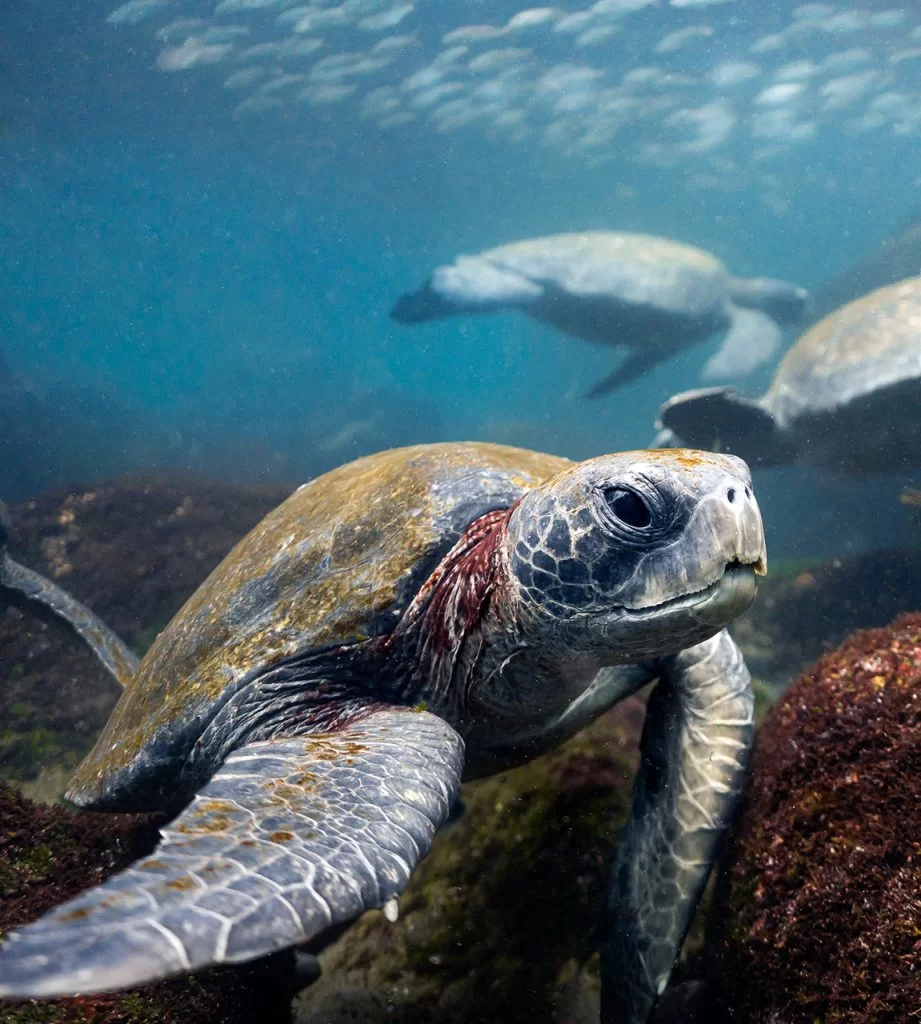
Top Snorkeling Sites for Sharks
The Galapagos Islands are perfect for snorkeling with sharks. Here are the top spots you should visit to see these amazing creatures.
Devil's Crown
Devil’s Crown is great for spotting White-tipped Reef Sharks. This site offers clear waters and diverse marine species.
Darwin Island
Darwin Island is famous for Hammerhead Sharks. You can also see whale sharks here, making it a must-see spot.
Wolf Island
Wolf Island offers encounters with both Hammerheads and Whale Sharks. This area is rich in underwater wildlife.
Kicker Rock
Kicker Rock has steep walls where sharks often swim. It’s a good place for viewing various marine predators.
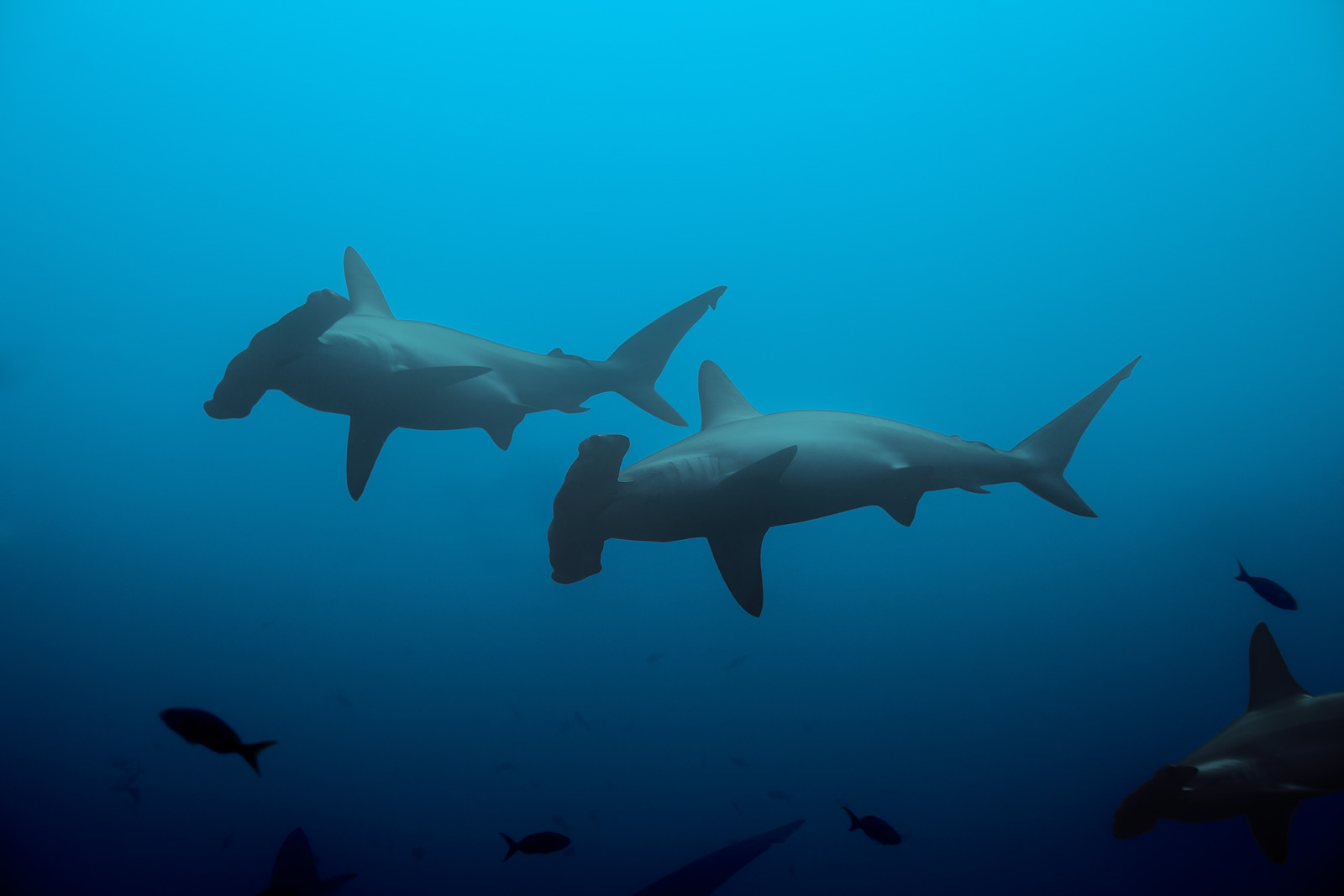
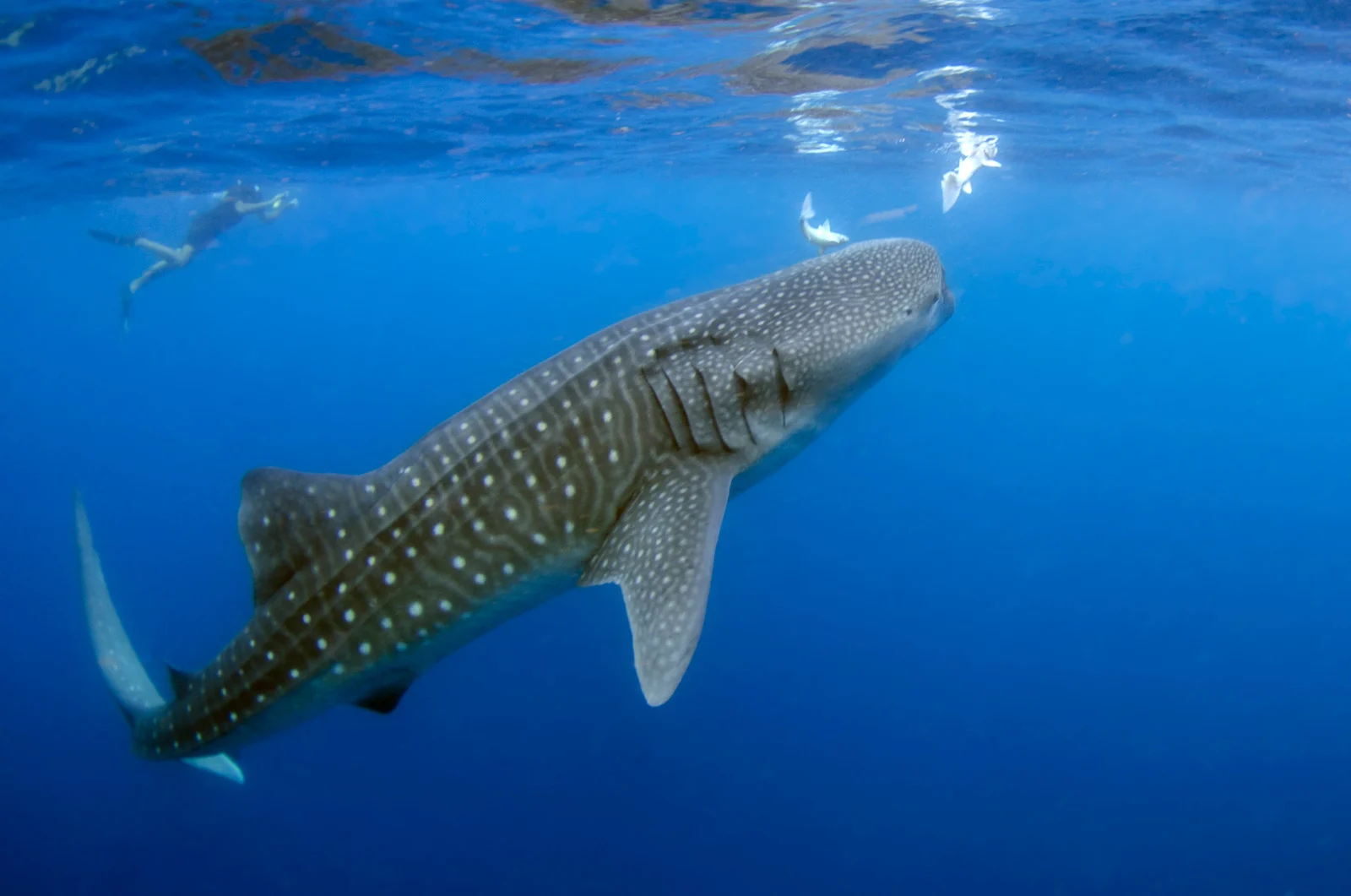
Each of these sites offers unique experiences and diverse shark habitats.
Tips for Wildlife Spotting
Having an experienced guide can greatly increase your chances of seeing rare marine animals.
Importance of Experienced Guides
Experienced guides make wildlife spotting easier and safer. Staying close to a guide helps you see camouflaged creatures, like hidden fish or well-blended sea turtles. Guides know the best places to look.
Guides also understand animal behavior. They can tell when it is safe to approach sea lions or sharks. Skilled naturalists or seasoned wilderness guides point out things you might miss on your own.
This makes your trip more fun and educational.
Exploring Deeper Waters
Experienced guides know the best spots to find exciting marine life. Deeper waters offer more spectacular wildlife sightings. For example, Devil’s Crown is a top site for spotting sharks and vibrant fish.
Sharks are more visible in these clear waters.
Underwater exploration into ocean depths reveals many wonders. Watch colorful parrotfish swim by or see sea turtles glide gracefully. Experienced guides can help identify unique creatures that hide in underwater caves and crevices.
The deeper you go, the more diverse the marine biodiversity becomes.
Discover the wonders of the Galapagos Islands! Snorkel with playful sea lions, marine iguanas, and vibrant fish. Encounter sea turtles, rays, and sharks in this rich marine paradise. Unforgettable wildlife experiences await!
The Galapagos Islands offer a stunning world of marine wildlife. Snorkel with playful sea lions and swim near colorful fish. Spot sea turtles and rays gliding through clear waters.
Every dive is an adventure, revealing the beauty beneath the waves.
Frecuently Asked Questions
In the Galapagos, you can find sea lions, marine iguanas, and various species of fish.
Yes, the Galapagos is home to unique creatures like the Galapagos penguin and hammerhead sharks.
Yes, visitors often spot dolphins and different whale species while exploring these waters.
The best way to experience it is through snorkeling or diving tours guided by experts familiar with local fauna.